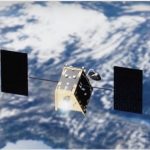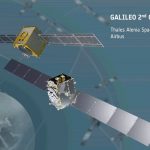GPS and Galileo Corrections via Nigerian GEO Sat Bring Centimeter Accuracy to Africa
The French company Geoflex demonstrated GNSS corrections-driven centimetric positioning in Brazzaville, Republic of Congo on July 8, at the national Stadium Alphonse Massamba-Debat. The demo employed a dual-frequency GNSS chipset receiving GPS and Galileo signals and the Geoflex corrections service via the Nigerian NIGCOMSAT-1R satellite on L Band
By Inside GNSS













